The Damar Hamlin effect: Bills player's on-field collapse left impact on Cincinnati
- Oops!Something went wrong.Please try again later.
- Oops!Something went wrong.Please try again later.
At 8:55 p.m. Jan. 2, Cincinnati Bengals receiver Tee Higgins caught a 13-yard pass and was tackled by Buffalo Bills safety Damar Hamlin, then 24. Hamlin got up from the tackle, adjusted his facemask, then fell backward.
Hamlin suffered a sudden cardiac arrest and was resuscitated. Cincinnati Assistant Fire Chief Matthew Flagler, the department's incident commander for the Bengals-Bills game, had a front-row view at the command post at Paycor Stadium along with police, fire, sheriff’s and Bengals’ officials.
“It is a 'Monday Night Football' game, which is so great. It’s fun to go to,” he said. The fans were joyous, he said, loud and raucous. Until Hamlin went down.
“I was on the phone with the dispatch center,” Flagler said. “All of a sudden I realize, I don’t hear a sound.”
That moment and what immediately followed it extended into the lives of thousands at the stadium and millions more watching the ESPN "Monday Night Football" showdown of two teams competing for AFC playoff seeding. It would be a night that, even after the game was canceled, would reverberate and change lives, including across Greater Cincinnati. As the Bengals and Bills return to Paycor Stadium this Sunday, the impact of Hamlin’s cardiac arrest and resuscitation – and the days that followed until doctors removed a breathing tube from his throat – continues.
Here's how a few lives were changed.
Monday Night Football viewers get lesson in the life-saving value of CPR
Flagler recalled seeing a crowd of people on the field. “There was an injured player. Kind of serious. I knew it was unusual. There was a large crowd around Damar Hamlin. We got word that there was a player under CPR.
“That was really, it was a shock.”
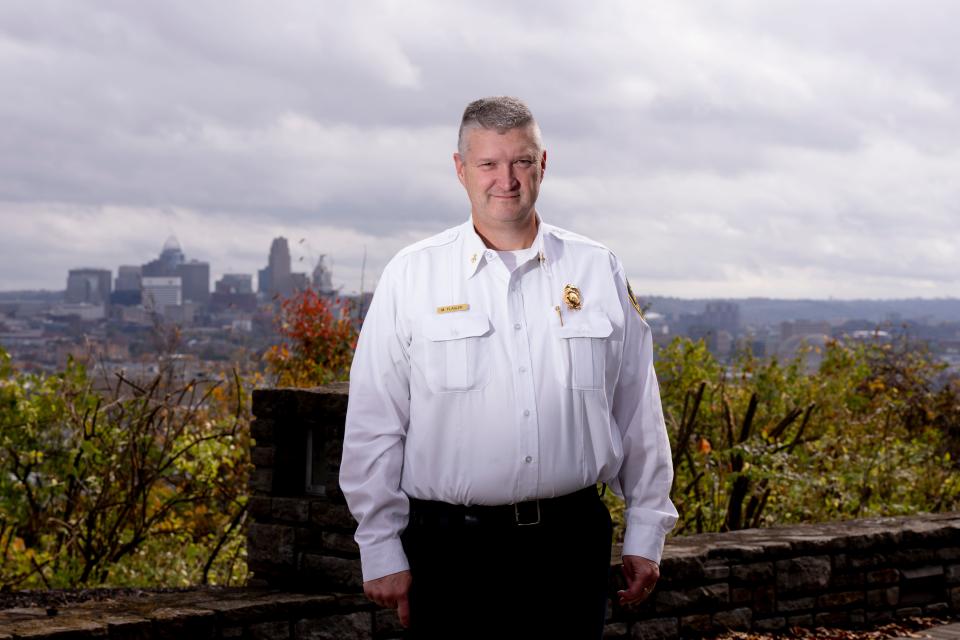
Flagler has about 30 years in emergency response and has been around for countless critical incidents. This one stands out.
He began helping coordinate next steps with other authorities: Making sure the exits were clear, the travel route was safe for the ambulance and the hospital knew what was coming. "We had to coordinate how 65,000 people would get safely out of the building," Flagler said.
"I was extremely proud to be in Cincinnati. I watched how our liveliest, rowdiest, most fun-loving citizens showed nothing but concern and respect for other people. It’s kind of fun that we have a history with Buffalo this way. We just really rallied around Buffalo."
Flagler said he thinks the camaraderie will continue with the Bills' return to Paycor Stadium. He said he plans to be at the command station again, even though he won't be the incident commander again.
He'll be remembering, he said, how Hamlin's collapse and resuscitation illustrated for millions of people watching the field that CPR really can save a life, and sent the message that everyone should learn the skill. Hamlin was given CPR by a Bills trainer that night.
"This is an absolute stark reminder ... of the effectiveness of bystander CPR," Flagler said. First responders have become aware of the power of the life-saving value of CPR in recent years, he said. Now the general public knows. "This case really highlighted that."
Hamlin's experience prompts safety conversation in family with young boys
The Long boys, of Fort Thomas, have always been involved in sports.
“My family has always been a very athletic family,” said Brandon Long, their dad. “They’ve done karate, baseball, basketball, soccer.”
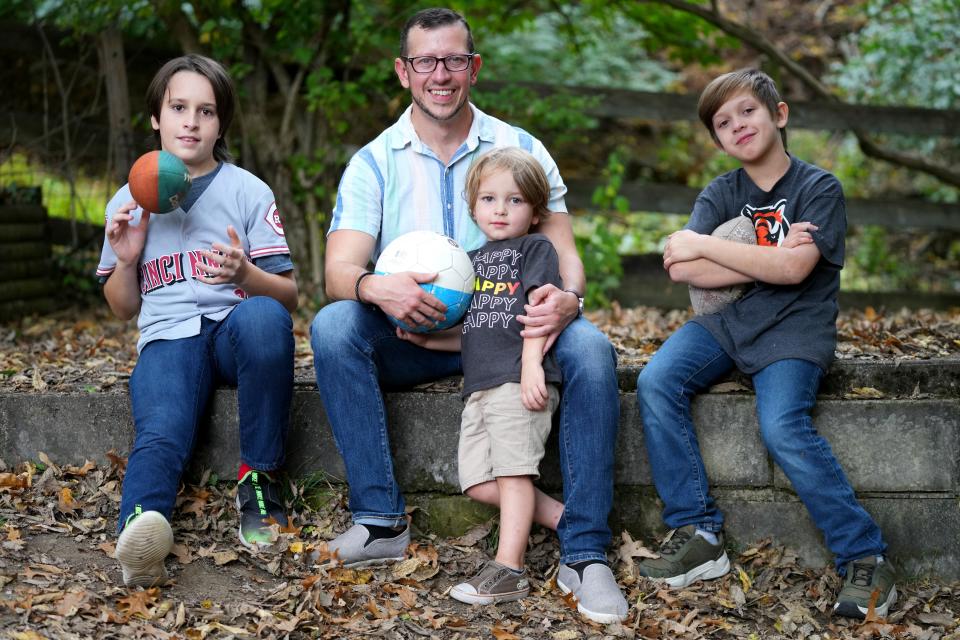
The boys are Eliah, 11, Micaiah, 9, and, currently less involved because of his age but equally eager, Gideon, 3.
As the older boys grew, their father said, they became increasingly interested in joining a football team. More kids their age were playing organized football. The boys seemed to want to play, too.
But that changed after the Bengals-Bills game Jan. 2.
“They were watching the very unfortunate game where the incident with Damar Hamlin happened,” Long said. The boys were 10, 8 and 2 years old. They were shocked and worried, their dad said.
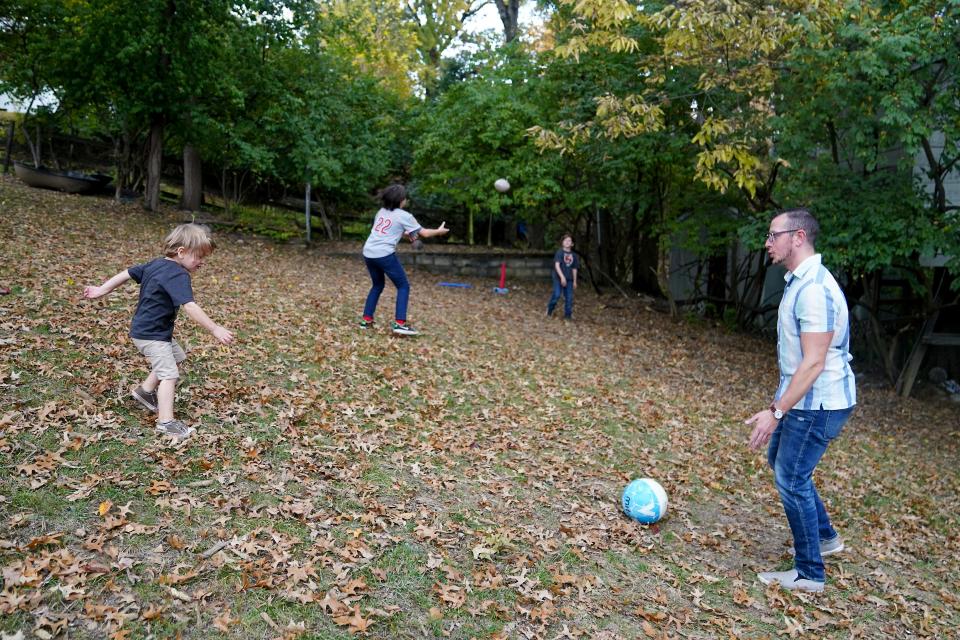
The boys asked about Hamlin's condition for days, Long said.
And he started talking to them about the safety risks with football.
“I told them, ‘I know that you’re very interested in it and we really want to encourage what you’re interested in, but I am very concerned of you playing football. It is far more dangerous than you realize,'" Long said.
He said the boys were unsure at first whether their safety could be compromised, like Damar's.
Hamlin, they knew, suffered from cardiac arrest, which can happen in other sports, as well as football. But for Long, the question of football safety for his kids went deeper. He said he looked up statistics about football injuries, including the risk of concussion in children who play football, and read them to his oldest son, so they could discuss their situation further.
The family considered the situation together, Long said, and they decided it’s best not to play. “They agreed,” he said.
It’s difficult, sometimes, Long said, for the boys to grow up in a society that is so football-focused. But the kids have stuck with their decision.
“I didn’t know football was so dangerous until I saw what happened with Damar,” Eliah said.
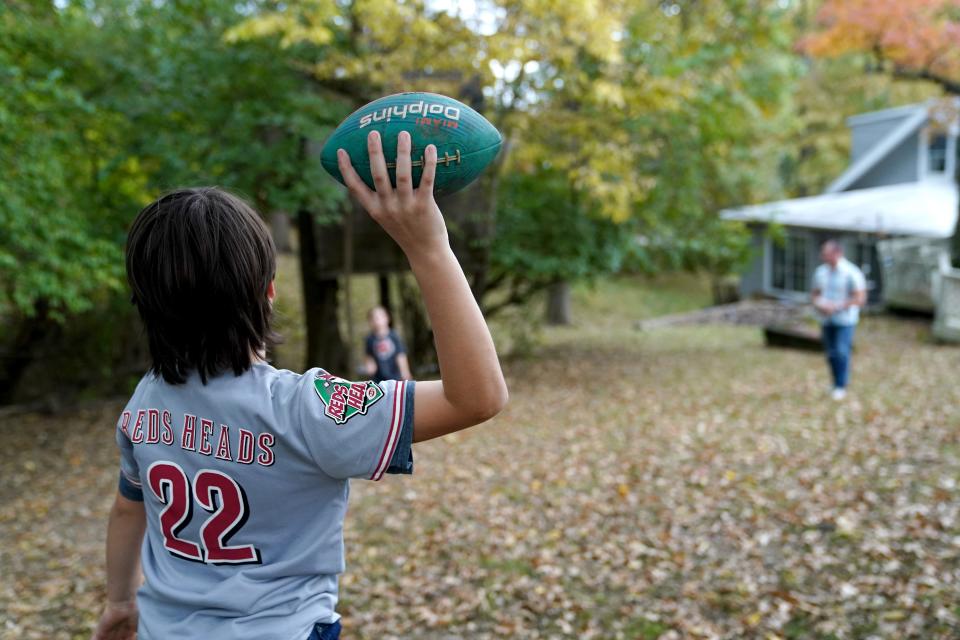
Hamlin's cardiac arrest, resuscitation buoys family foundation in memory of boy who died on field
Matthew Mangine Sr., of Union, had the game on in his basement after watching the Rose Bowl, but he wasn’t really paying attention.
“All the sudden I heard that Damar was down,” he said. He didn’t quite catch what had happened before the scene was interrupted by a commercial break. “When they came back, the moment I saw it in slow motion, I knew exactly what it was."
“He’s in cardiac arrest,” Mangine thought.
He knew because his own child, Matthew Mangine Jr., died from cardiac arrest June 16, 2020, during soccer practice at St. Henry High School. And ever since, Matthew Jr.'s parents, Matthew Sr. and Kim Mangine, have been educating people in the region about sudden cardiac arrest and life-saving techniques, and providing help to prevent such tragedy for other kids and their parents with the Matthew Mangine Jr. One Shot Foundation.
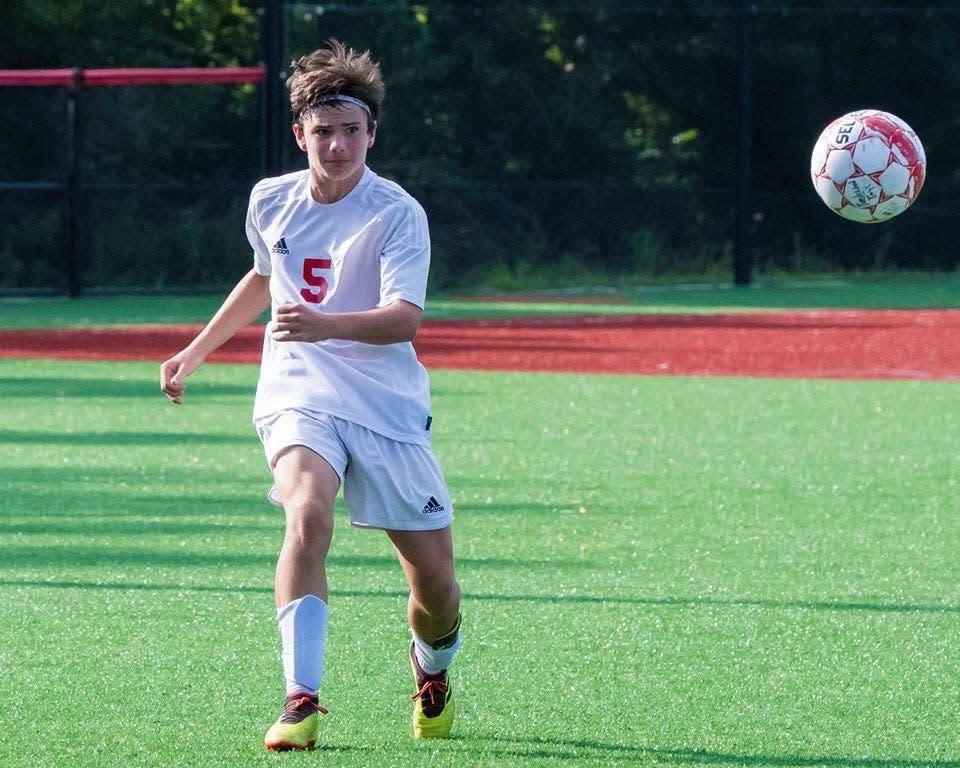
Matthew Jr. was not treated with an automated external defibrillator, or AED, until first responders arrived. He collapsed at practice with his mom watching. Hamlin's mother was watching when he collapsed, too.
Mangine said his phone started blowing up with calls and texts and people thinking of his family. His response: “I am just praying for this young man.”
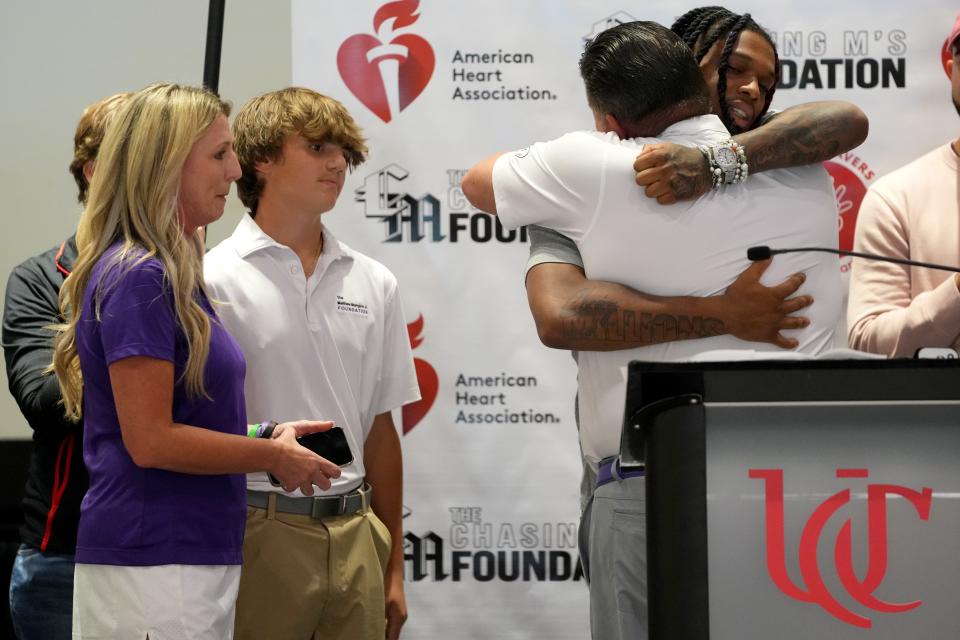
Mangine, who later was able to meet Hamlin and his family, said Hamlin’s experience brought unmatched awareness to the risks of athletics, the need for AEDs, and the understanding that the game of football isn’t everything.
He will likely be thinking about that when he and his family return to Paycor Stadium on Sunday to watch the game, Mangine said.
The foundation in his son's memory offered equipment assistance and received a few requests for AEDs each month. But within 24 hours of Hamlin's resuscitation, there were 60 requests on the site for AEDs.
“People are fully listening to us now," Mangine said. "They realize the problem because they saw it with their own eyes.
“We are light years ahead of where I thought we would be if not for that.”
Bills Backer amid Bengals fans sees strength in Cincinnati response to Hamlin
Erica Alfes-Perkins, of Independence, is a member of the Bills Backers of Northern Kentucky and Cincinnati, and she was at the game Jan. 2 with boyfriend Tony Lloyd when Hamlin collapsed.
“We didn’t know what was going on," she said. "Somebody goes down. My niece is texting me. I am finding out via text.” A friend of hers who was at the game came to her to try to figure out what was happening on the field.
“It was very eerily quiet. Nobody knew what to do,” Alfes-Perkins said.
She’d been a lifelong Bills fan. Her dad was from Buffalo. She’d grown to love not just the team but individual players as they came on.
When she learned what had happened to Hamlin, she said, she was shocked.
“It was very hard. Emotionally, you follow them. I am seeing them walk off holding their heads. Some were kneeling down and crying.”
The respect from the Bengals fans was incredible, she said. While there were a few people, probably drunk, she said, who were shouting inappropriate things, most of the fans sensed the gravity of the situation.
“For the most part, the good side of humanity came out,” Alfes-Perkins said.
She said she didn't feel emotionally OK until Hamlin woke up in the hospital.
“I think in some ways, we look at athletes as kind of invincible," she said. Not anymore, she said. "It just kind of gave us a new perspective on life being fleeting. You have to live your life to the fullest."
Alfes-Perkins is ready for Sunday’s return of a Bills-Bengals game at Paycor Stadium. She will be there again, and believes that the effect that Damar Hamlin had on fans and the Cincinnati area hasn’t dissolved, regardless of whether the Bills or Bengals pay any kind of tribute to it.
“I feel like there’s going to be some mixed emotions,” she said. “Also, I’m going to be very happy that Damar’s going to be standing there, alive.”
But more than that, she said, Hamlin's cardiac arrest and what followed – millions donated to Hamlin's charity, CPR classes, AED giveaways – will take him far beyond the NFL, for decades.
"Twenty years from now, they're not going to be talking about how many interceptions he got or how many tackles he made," Alfes-Perkins said. "They're going to be talking about how he's making an impact on lives as a human being."
This article originally appeared on Cincinnati Enquirer: Buffalo Bills' Damar Hamlin left impact on Cincinnati

